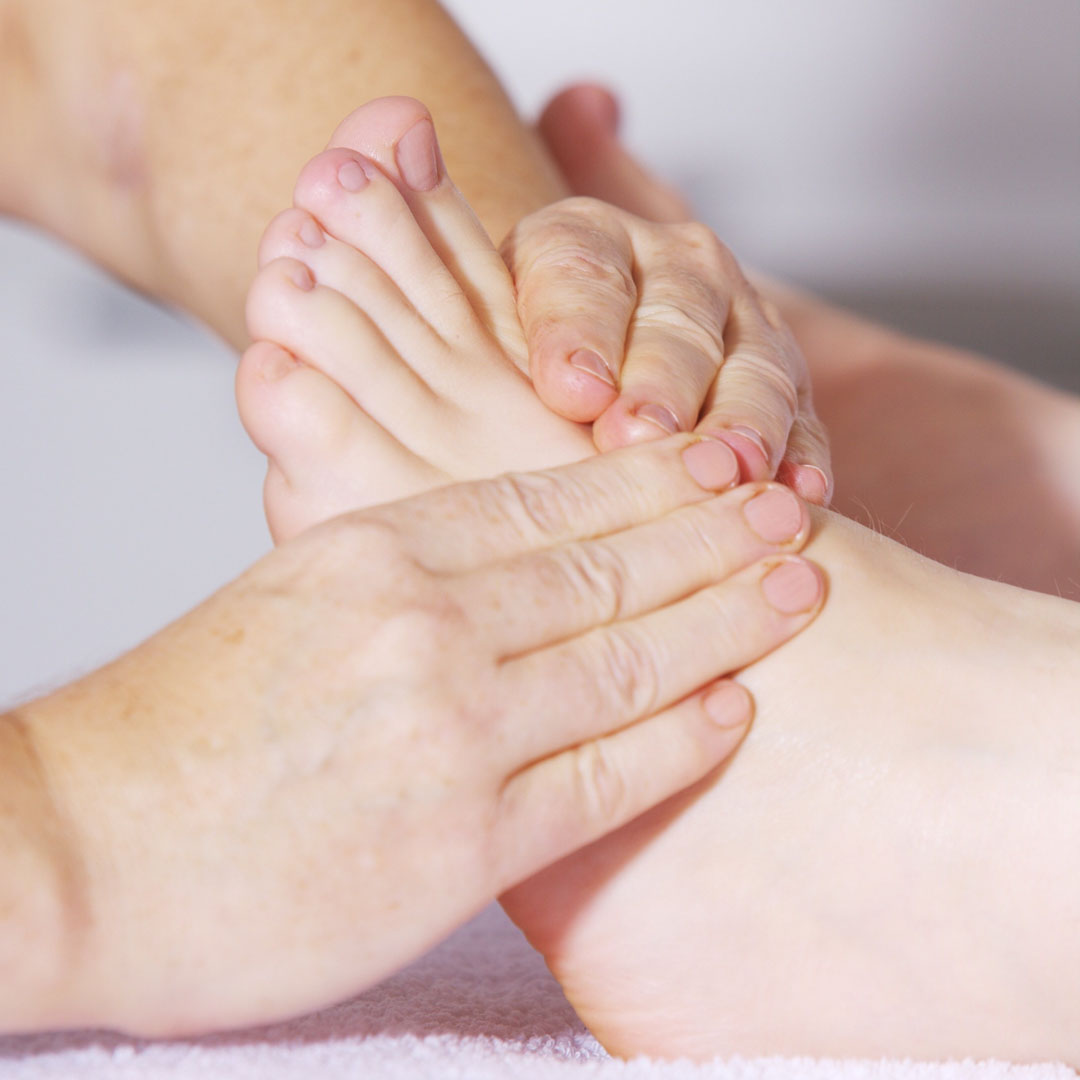By: Dana M. Brandt-Tinker, LMT
Your alarm goes off for the third time. It’s time to finally pull yourself out of bed. You swing your feet over the side of the bed, stand up, and OW! Your knee quickly bends to take the weight off your foot.
What is that sharp, stabbing pain on the bottom of your foot that has you holding one foot while hopping up and down on the other? You gingerly step down again, and you can still feel it. You try to walk on it thinking it will go away, but several days, then weeks go by, and the pain is still there.
Dr. Google offers a diagnosis: plantar fasciitis. You read that it’s inflammation of your plantar fascia, the thick band of tissue that connects your heel bone to your toes. But did you know that your Achilles Tendon is also attached to the plantar fascia, and if your calf muscle is tight the ankle becomes less flexible, and the plantar fascia also tightens? When it’s under too much stress, it develops small tears and irritation. According to Dr. Google, ignoring plantar fasciitis can lead to chronic, debilitating pain and other foot, knee, hip, or even back problems, and I couldn’t agree more!
So what can you do to alleviate and prevent plantar fasciitis?
1. Get it Checked Out
Sure, Dr. Google is great. But you should have your primary care physician check you out, too. It’s wise to rule out any other health or structural issues that can cause foot pain.
2. Reduce Inflammation
The best way to reduce inflammation is through icing. This can be done by taking a frozen water bottle and rolling it under your foot from heel to toe for 15 minutes. You can also apply an ice pack around your heel and the arch of your foot for no longer than 15 minutes. Or if you are knowledgeable about essential oils, there are some really powerful oils that can help reduce the inflammation and pain when used in conjunction with ice.
3. Stretches
Plantar fasciitis is most common in runners and other athletes. If you run a lot, incorporating foot stretches into your daily routine can help prevent the development of Plantar Fasciitis.
Even if you are not physically active, you may suffer from Plantar Fasciitis if you stand all day, or if you tend to wear shoes with poor support or wear high heels regularly. You will also benefit from doing foot stretches throughout the day.
Plantar fasciitis is felt most often first thing in the morning because the plantar fascia tends to tighten when you are at rest. If you’re suffering from heel pain, try these stretches in the morning before doing anything else:
- Flex your foot up and down 10 times before standing. Slowly!
- Do toe stretches. With your foot extended in front of you as far as possible while still in reach, grasp and pull your big toe back toward your ankle. Hold for 15-30 seconds. Repeat three times.
- Try towel stretches. Fold a towel lengthwise and put it under the arch of your foot, holding both ends in your hands. Gently pull your foot towards you. Hold for 15-30 seconds. Repeat three times.
- Finally, do a rolling massage. Sit on the edge of the bed or a chair and roll your foot back and forth over a cold bottle of water, can, or foam roller for one minute.
You can do these same stretches throughout the day when it’s possible to take your shoes off, such as after work, before exercising, or before bed. During these stretches you should feel some pulling, but no pain. Stop and take a break or stretch more gently if it begins to hurt.
4. Massage
Massage is relaxing even under the best circumstances, so no wonder it’s ideal for soothing sore muscles and tissues when you’ve strained something! In fact, some studies have found that massage combined with stretching works better at treating plantar fasciitis than other medical treatments.
If you’re suffering from heel pain, massage by an expert may help. A massage therapist who understands all of the muscle groups in your legs and feet and how they connect will know how to massage your tissues and release the tension that can cause pain.
Alternatively, you can do a simple massage at home too. Start by warming up your foot with a hot bath, shower, or foot soak. With a little bit of moisturizer or massage oil on your hands, massage your foot along its full length from heel to toes with medium to firm pressure. Then switch to massaging across the width of your foot. Go back and forth in these two directions for about two minutes on each foot. Finish by applying ice to each foot for about 15 minutes.
Whether you see a professional or do it yourself, massage increases blood circulation and reduces tightness in your plantar fascia. Better circulation allows your tired muscles to get the oxygen and nutrients they need to feel strong again. All of this promotes healing to the damaged tissues of your foot, and helps those tissues be more limber and ready for action so they don’t sustain more damage as you go about your day.
We’ll Find a Solution
Whatever the cause of your heel pain, the solution is possible. A combination of targeted massage and stretches can go a long way in healing pain in your feet and preventing plantar fasciitis in the future. The next time you get out of bed and feel that familiar sharp, stabbing pain, take a few minutes to stretch and massage your foot, and you’ll be up on your feet— literally— in no time!

